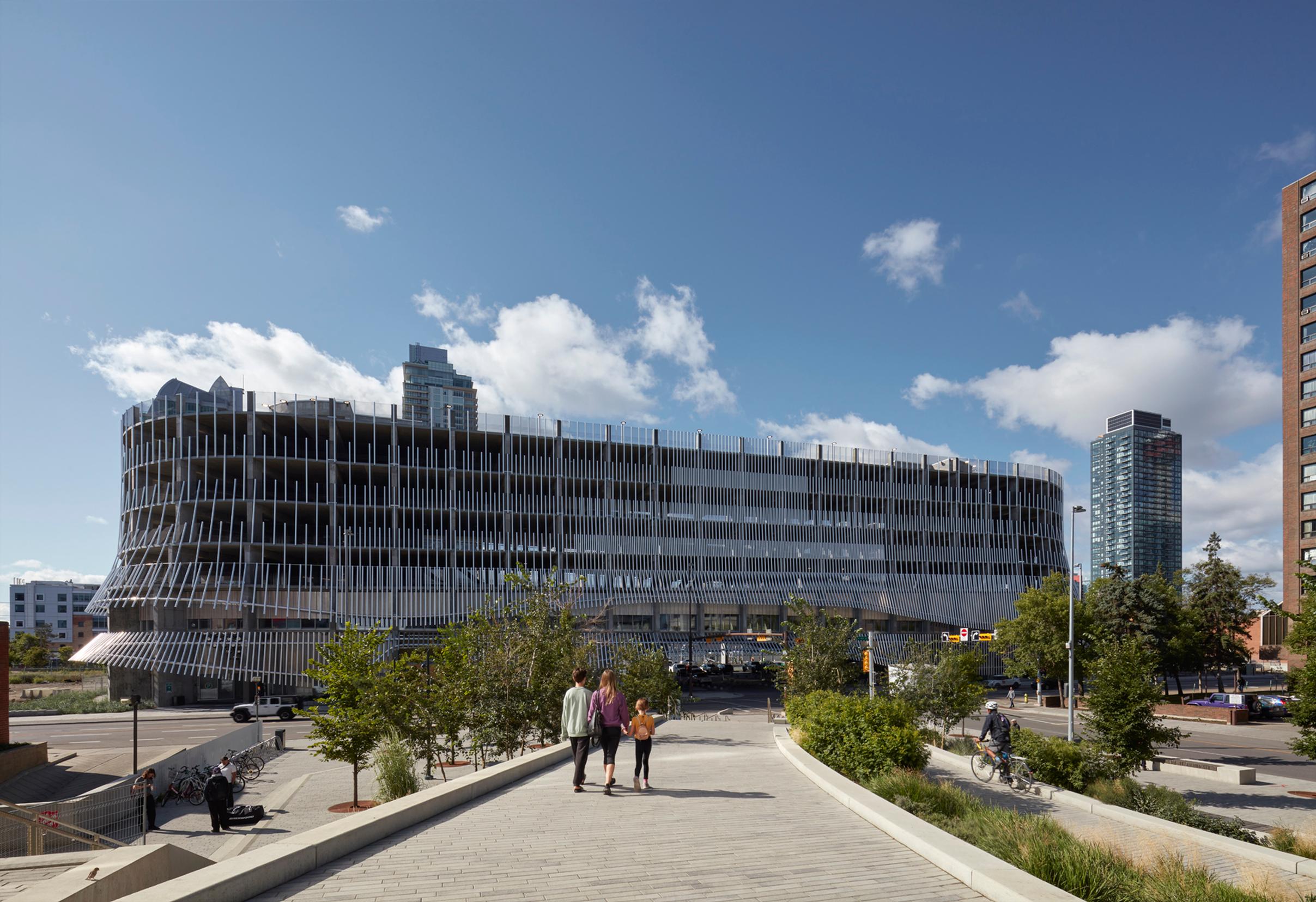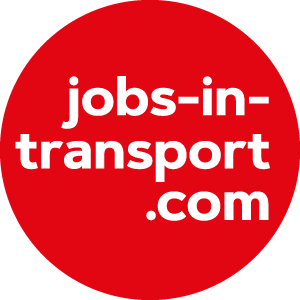

When designing a new building, it is not usual for developers, architects and engineers to give a lot of thought to what happens should the project eventually become redundant. However, this is exactly the approach taken by the team creating a multi-storey car park in Calgary, Canada.
Anticipating its future redundancy, the design and client team have created a parking garage that actively contributes to the public realm and can be easily converted into an office, light industrial or residential building.
The City of Calgary in Alberta required a downtown ‘parkade’ to free up multiple lots for development. Understanding the likelihood for the building’s future obsolescence, municipal officials also wanted a creative solution that would justify the expenditure now and in the future.
So the clients, Calgary Municipal Land Corporation and the Calgary Parking Authority, asked the collaborative team of Kasian Architecture, Interior Design and Planning, and 5468796 Architecture to design a 510-bay multi-storey garage that could be easily converted into an office, light industrial or residential building.
The project site is located adjacent to the new Calgary Library, Calgary City Hall and the Studio Bell, the National Music Centre. It included an unbuildable easement for an underground light rail tunnel which cuts through the middle of the project site and represents what the city determined was a 20% loss in buildable area.
The design team’s solution has been to create a building in the form of an elliptical helix, bridging the easement and thereby recapturing much of the lost land value. Vehicles enter at grade, directly over the easement.
The ellipse creates a large, street-width interior courtyard with 12-metre shallow floor plates that allow daylight and ventilation to pervade the interiors from multiple directions, a critical feature should the structure be converted to a new use. The floor plates ascend on a 1-2% gradual slope to avoid the need for vehicular ramps that would eventually need to be removed. Ceiling heights of 4-metres, clear spans, and universal load-bearing capacity contribute to a variety of gradual or wholesale changes with low-cost ramifications.
The vehicular entrance, with clearances that will allow for maintenance of the underground tunnel, is flanked by pedestrian and bicycle entrances and activities such as a basketball court, activating the frontage along 9th Avenue SE and framing the southern edge of the developing East Village neighbourhood. Spherical bollards, coloured concrete patterns on the floor, and a traffic mirror ceiling ensure the central courtyard is a lively and vibrant place with a distinctive and memorable aesthetic, enriched by additional public amenities including a cafe patio and an outdoor exhibition space.
The structure is enveloped in a distinctive guard façade that is raised strategically around the perimeter to provide pedestrian, bicycle, and vehicular access.
The members of the façade hold a fine-grained mesh that acts as a pedestrian guardrail. The aim is that this can easily and inexpensively be converted into residential/commercial suite balconies with no additional work required.
Joanne Sparkes, project architect at Kasian Architecture, Interior Design and Planning, says: “Halfway into the design process, the client firmed up a partnership with Platform, an entrepreneurial hub for the city’s burgeoning innovation community. This was the first test of the adaptable design – requiring conversion of the plan into an open and flexible office space that can be easily modified for use by individuals and small and large groups, and occupying the space on an hourly, daily, monthly or yearly basis.”
The design team proposed that Platform occupy the first two levels of the building to animate the street frontage. By suspending a light-framed vehicular ramp that cuts through the central courtyard, the vehicular circuit was removed from within the structure. The ramp also offers drivers an unexpected user experience. It can be easily removed later once if vehicular access is no longer needed.
Sasa Radulovic, founding partner at 5468796 Architecture, says: “Inside, Platform is imagined as a space ripe with opportunities for work and collaborative potential. Its relatively raw and generic 4,500 square meters can be adapted and appropriated by tenants at will — even for light industrial use. The nexus connecting the two levels is a pitch stage that cuts through the second floor, connecting the principal entrance with both floors and encouraging both organised and impromptu meetings.”
The space is designed to enable evolution over time. An ‘infrastructure frame’ hangs overhead but within reach, suspended from the ceiling to a datum at 2,400mm above the floor, to facilitate easy connections and reconfigurations, thereby providing ultimate flexibility for any layout. Beneath the infrastructure frame are generic pods that vary in openness – from fully open to closed. Users and staff can easily access power from overhead, and arrange the portable lights and mobile furniture to meet their individual or group requirements.
The succeeding six levels comprise 280,000 square feet of parking, with light-washed, pedestrian-forward routes and elevated views in all directions. Clear, simple, and single-direction circulation is explained with distinctive wayfinding – created by the architects as an extension of the building design.
In its next life, the car park can be converted partially or entirely, gradually or expeditiously, and to one or more uses. The shallow slope provides a ‘flat’ floor within acceptable tolerances for class B or C office or light industrial space. The imperceptibly shallow spiral creates an ‘infinite’ floor plate, allowing for great flexibility in the future. Residential conversions can be achieved with a surface topping material.
Joanne Sparkes says: “Beyond providing the necessary urban infrastructure to serve the city, as well as an overarching design intention to see the structure’s use transform for the needs of the future, the design of the 9th Avenue Parkade and Innovation Centre contributes to the urban fabric of the City of Calgary in a distinct way. Engaging local photographers, car enthusiasts, and public appreciation within a key cultural neighbourhood, the project continues the district’s reputation for strong design excellence.”
Sasa Radulovic adds: “Since the opening of the parkade portion of the project, its functional aesthetic has been making regular appearances as a defining backdrop for Calgarians. It actively contributes to the public realm and to the design conversation of our cities – that conventional typologies can evolve beyond the accepted standard to provide delightful, inspiring experiences and spaces. The success of the project is the result of a diverse design and client team demanding more of the project brief and developing innovative, business-conscious solutions in order to integrate a long-term, iconic design into Calgary’s urban identity.”

TransportXtra is part of Landor LINKS
© 2025 TransportXtra | Landor LINKS Ltd | All Rights Reserved
Subscriptions, Magazines & Online Access Enquires
[Frequently Asked Questions]
Email: subs.ltt@landor.co.uk | Tel: +44 (0) 20 7091 7959
Shop & Accounts Enquires
Email: accounts@landor.co.uk | Tel: +44 (0) 20 7091 7855
Advertising Sales & Recruitment Enquires
Email: daniel@landor.co.uk | Tel: +44 (0) 20 7091 7861
Events & Conference Enquires
Email: conferences@landor.co.uk | Tel: +44 (0) 20 7091 7865
Press Releases & Editorial Enquires
Email: info@transportxtra.com | Tel: +44 (0) 20 7091 7875
Privacy Policy | Terms and Conditions | Advertise
Web design london by Brainiac Media 2020